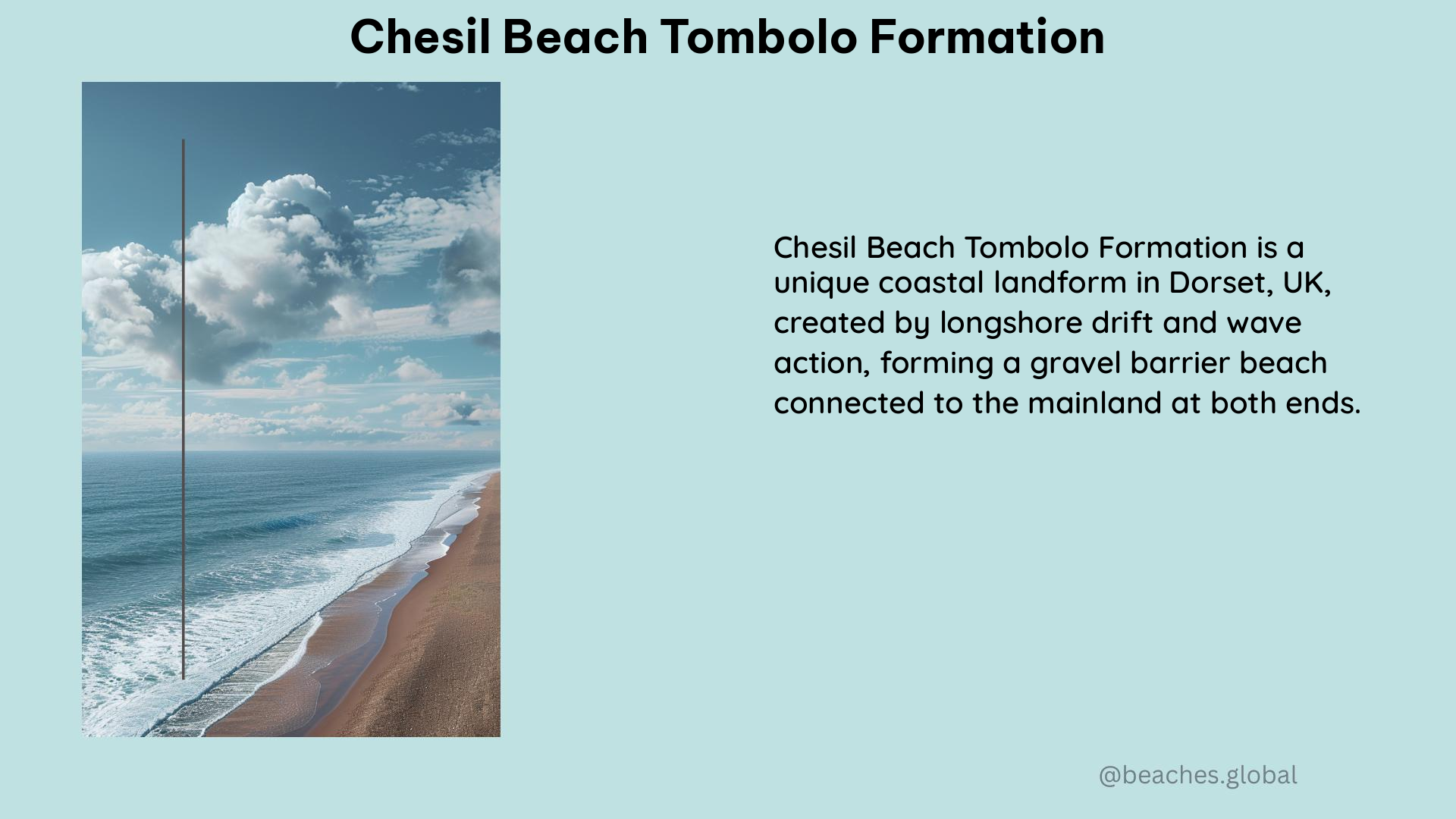Chesil Beach is a remarkable natural wonder located on the Jurassic Coast in Dorset, England. This 18-mile-long shingle beach is a prime example of a tombolo, a unique coastal landform that connects an island or peninsula to the mainland. The formation of Chesil Beach has been a subject of fascination for geologists and beach enthusiasts alike, and its stunning beauty has made it a popular destination for visitors from around the world.
What is a Tombolo?
A tombolo is a narrow strip of land that connects an island or peninsula to the mainland. It is formed when waves and currents deposit sediment, typically sand or shingle, in the gap between the two landmasses. Tombolos are relatively rare, and Chesil Beach is considered one of the largest and most impressive examples in the world.
The Formation of Chesil Beach

The formation of Chesil Beach is a complex process that has been shaped by a variety of geological and environmental factors over thousands of years. Here’s a closer look at how this remarkable landform came to be:
Rising Sea Levels
During the Holocene age, approximately 6,000 years ago, rising sea levels caused by the melting of glaciers and ice sheets led to the formation of Chesil Beach. As the sea level rose, the water began to erode the cliffs and headlands along the Dorset coast, releasing sediment that was then carried by waves and currents to the area where Chesil Beach now stands.
Longshore Drift
The movement of sediment along the coast, known as longshore drift, played a crucial role in the formation of Chesil Beach. As waves and currents carried the sediment eastward, it began to accumulate in the gap between the Isle of Portland and the mainland, gradually building up the beach over time.
Pebble Size Variation
One of the most distinctive features of Chesil Beach is the gradual increase in pebble size from west to east. At the western end of the beach, the pebbles are small, measuring just a few centimeters in diameter. As you move eastward, the pebbles gradually become larger, reaching the size of potatoes at the eastern end near the Isle of Portland.
This variation in pebble size is due to the different sources of the sediment and the way it has been transported and sorted by the waves and currents. The smaller pebbles at the western end of the beach are composed of resistant quartz, while the larger pebbles at the eastern end are made up of grey-brown flint and light blue-grey chert, which come from the Cretaceous chalk and Upper Greensand formations.
Coastal Recession and Human Intervention
In recent years, Chesil Beach has become a closed shingle system, meaning that it no longer receives replenishment from outside sources due to coastal recession and human intervention. This has made the beach more sensitive to environmental changes, such as rising sea levels, and it is estimated that the beach at Portland is moving eastward at a rate of around 15 centimeters per year.
The Importance of Chesil Beach
Chesil Beach is not only a stunning natural wonder but also a vital part of the local ecosystem. The beach protects the lowlands of Weymouth and the Fleet, which is considered one of the most important lagoons in Europe. The lagoon behind the beach is home to many endangered species and thousands of migratory birds, making it a crucial habitat for wildlife.
Visiting Chesil Beach
Chesil Beach is a popular destination for tourists and locals alike, offering stunning views of the Jurassic Coast and the English Channel. While swimming, sailing, and surfing are not recommended due to the steeply sloping beach and the large pebbles, the beach is a popular spot for fishing, and the Fleet Lagoon behind the beach is a popular destination for birdwatchers and nature enthusiasts.
Conclusion
Chesil Beach is a truly remarkable natural feature, a testament to the power of geological processes and the ever-changing nature of our coastlines. Whether you’re a beach enthusiast, a geologist, or simply someone who appreciates the beauty of the natural world, a visit to Chesil Beach is sure to leave a lasting impression.
References:
- Chesil Beach and The Jurassic Coast – Earth Science Partnership
- Chesil Beach, one of the world’s greatest shingle tombolos – Dorset Camper
- Chesil Beach – University of Washington, Tacoma
- Chesil Beach looking eastwards towards the Isle of Portland – Earthstudies
- Formation – Chesil Beach
